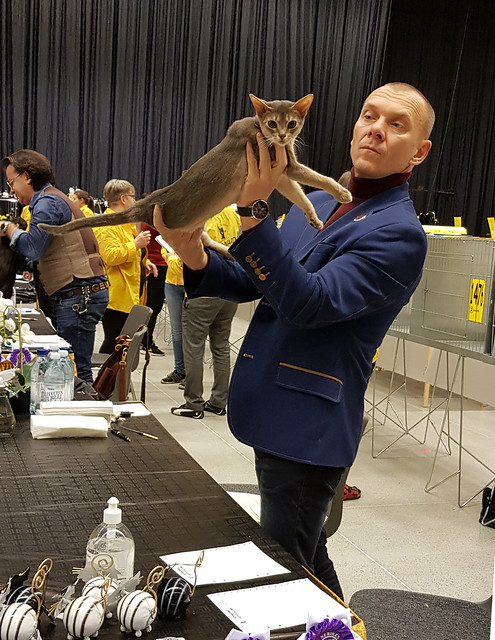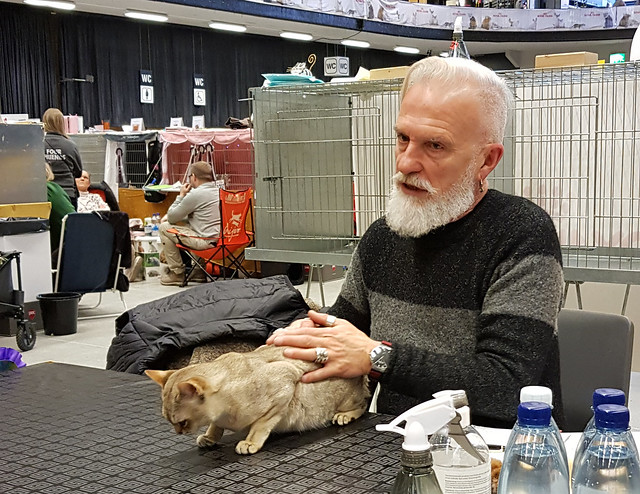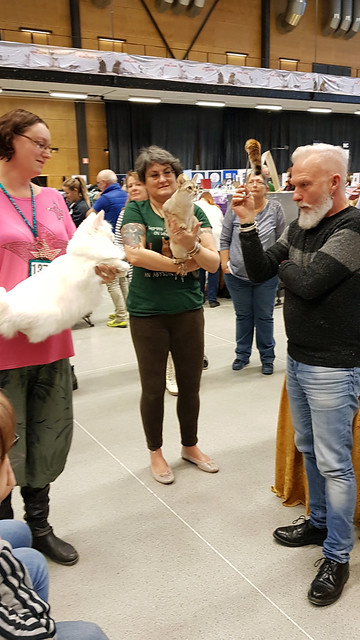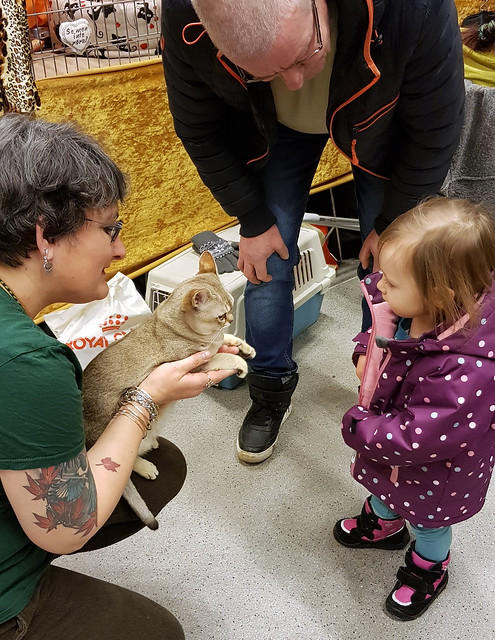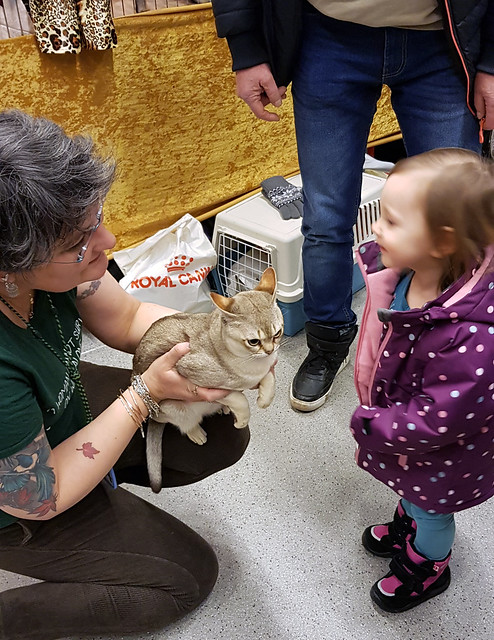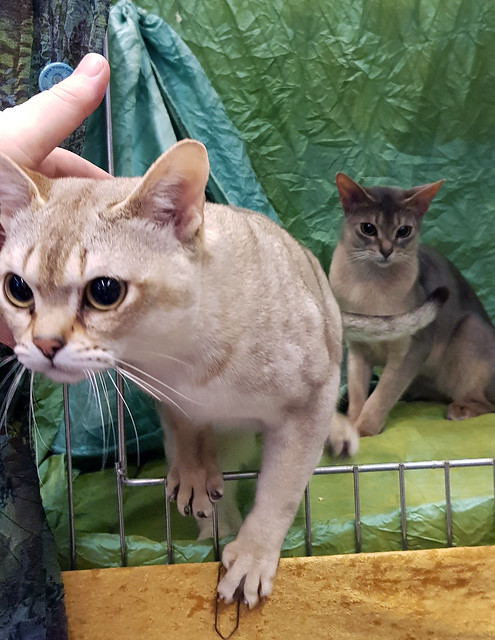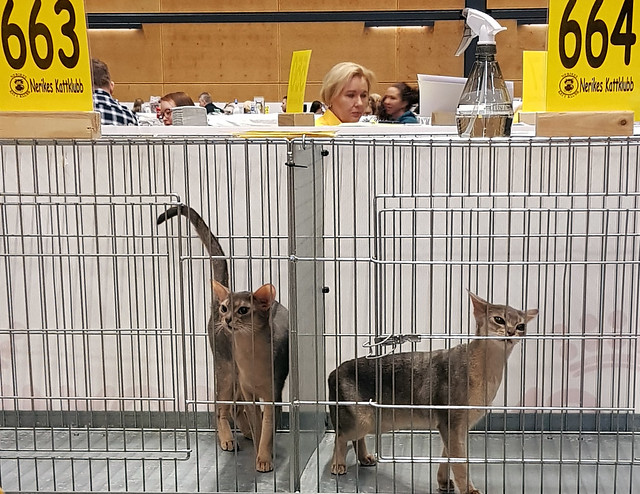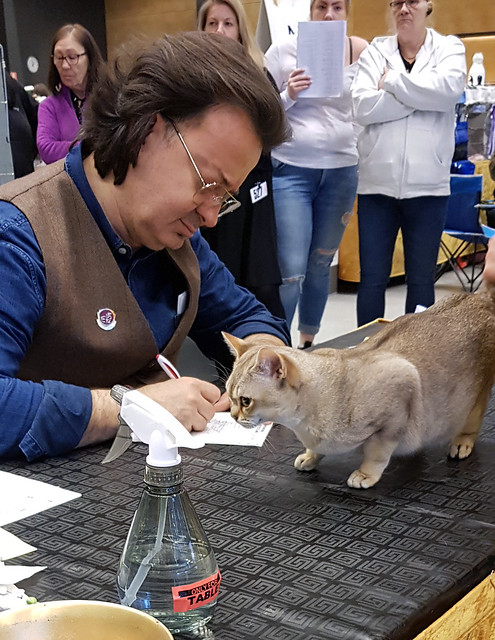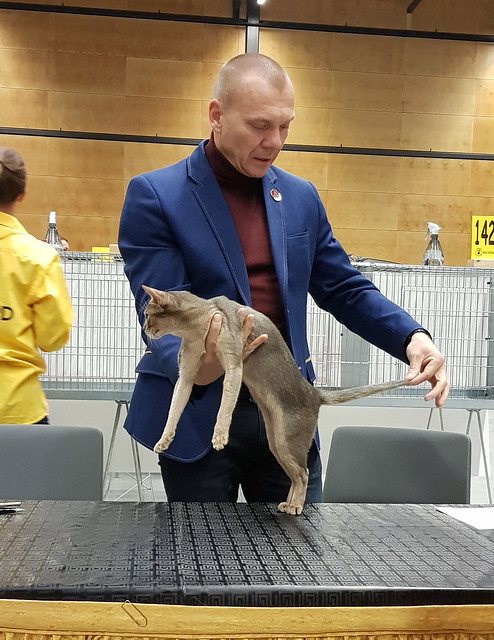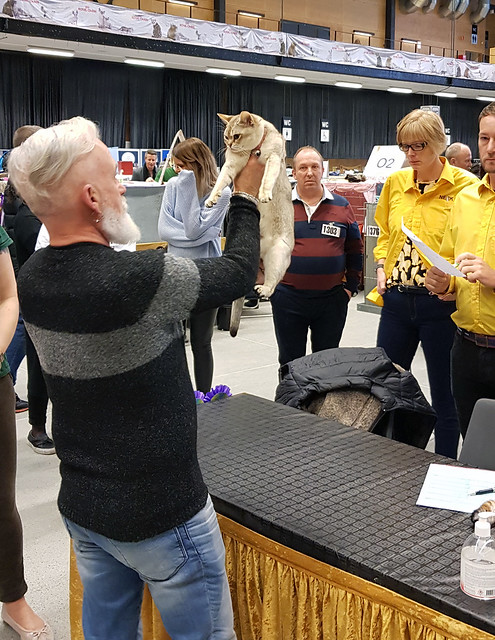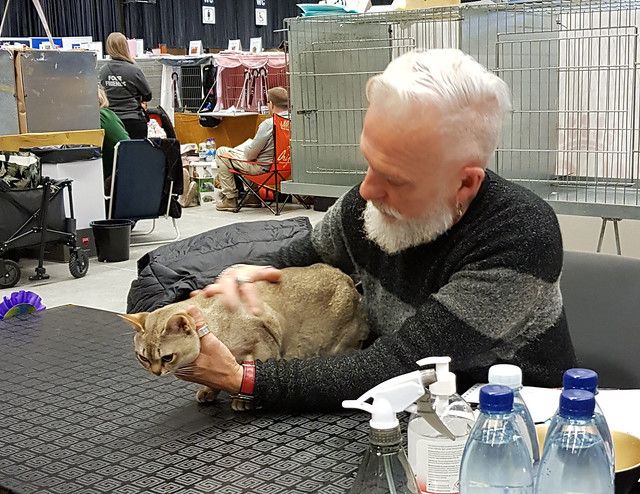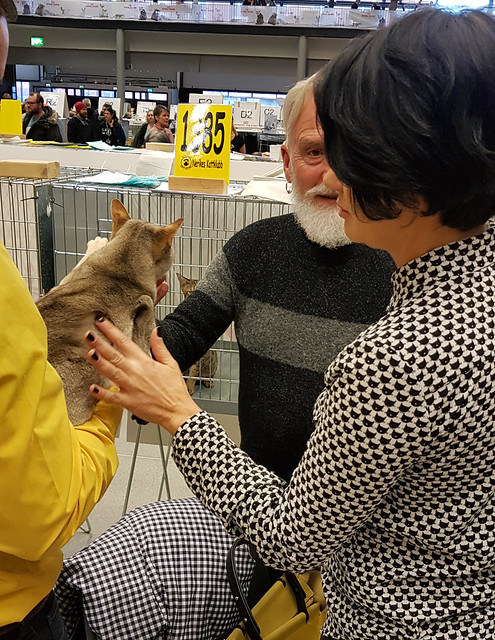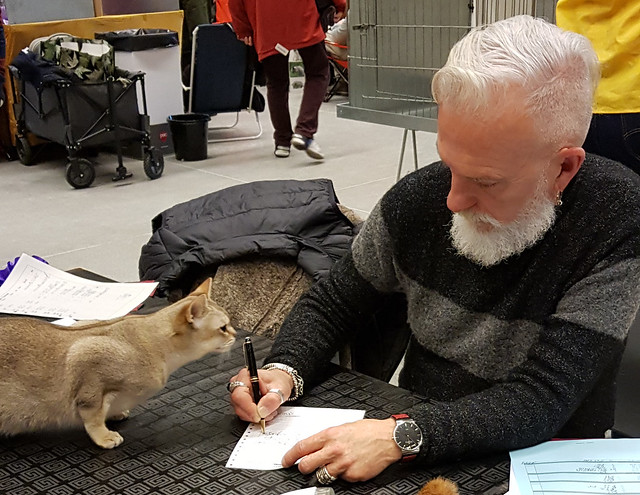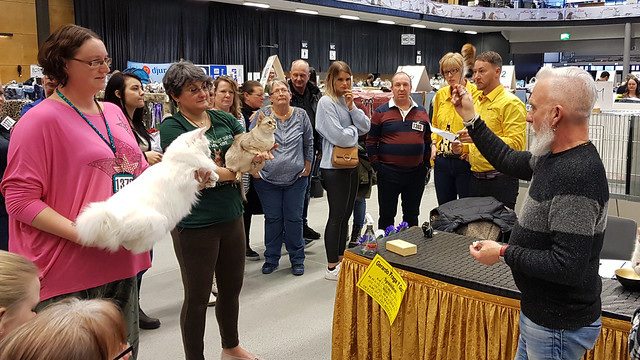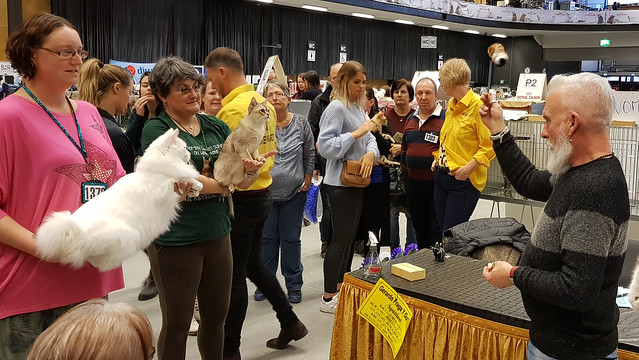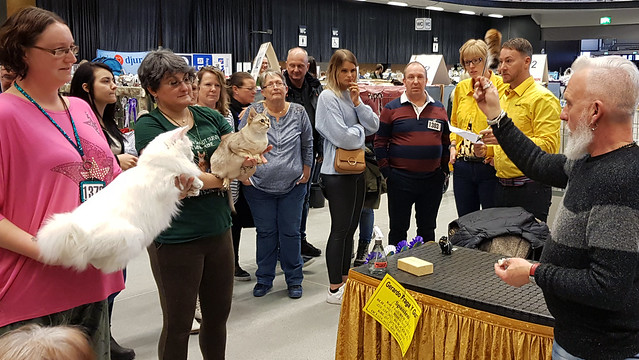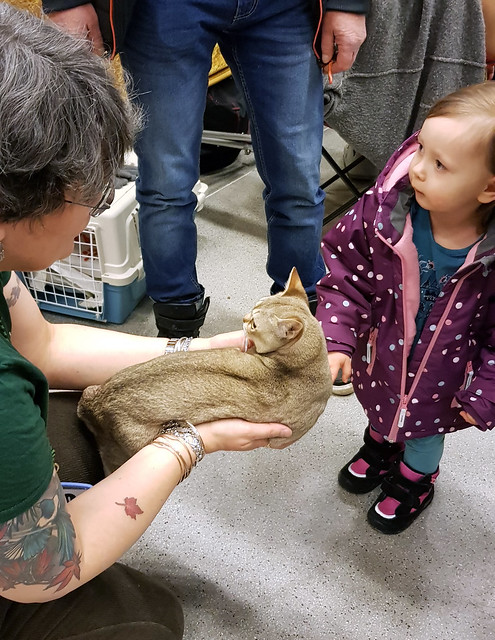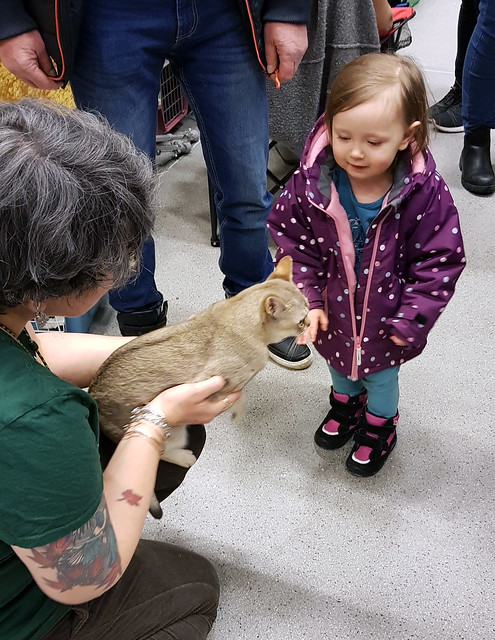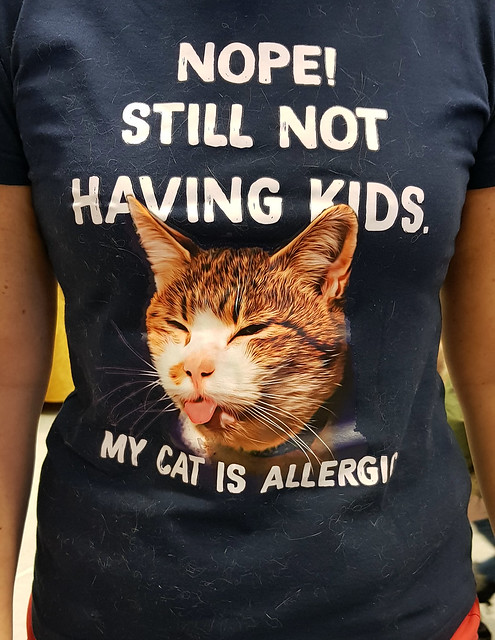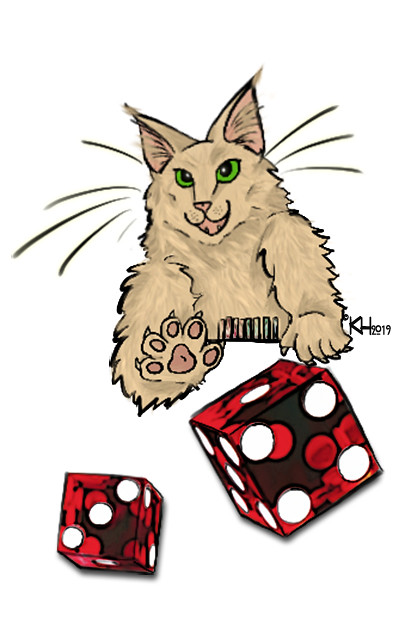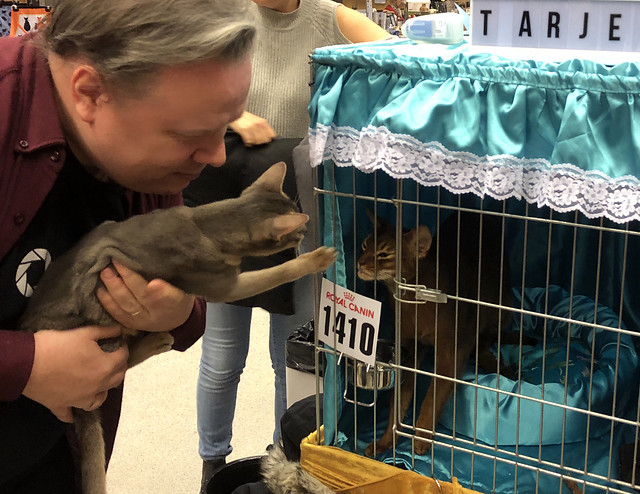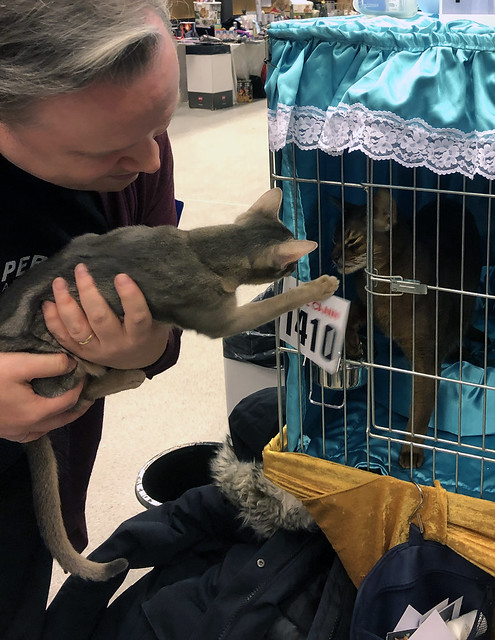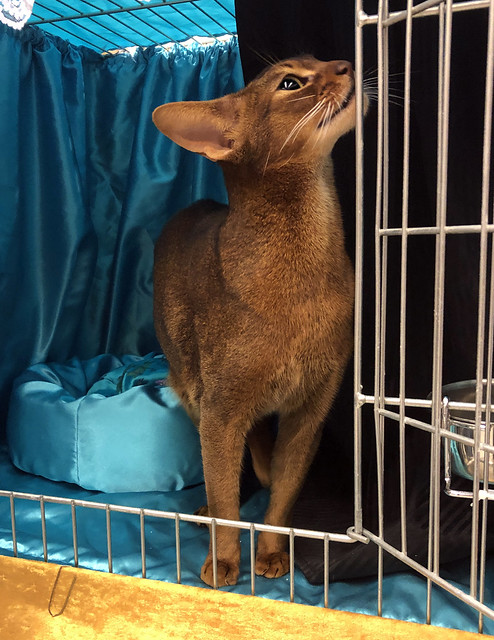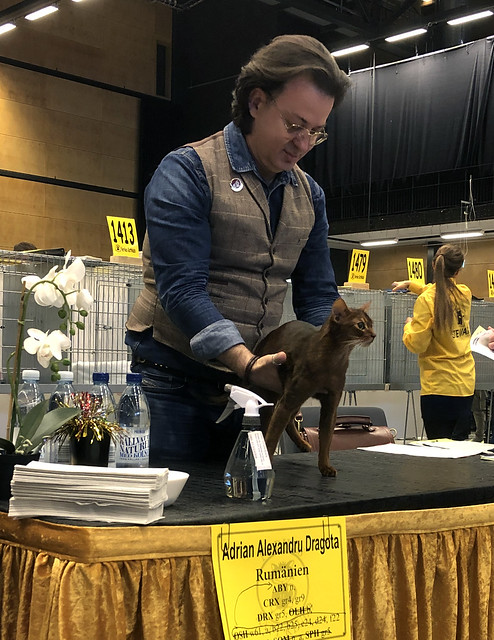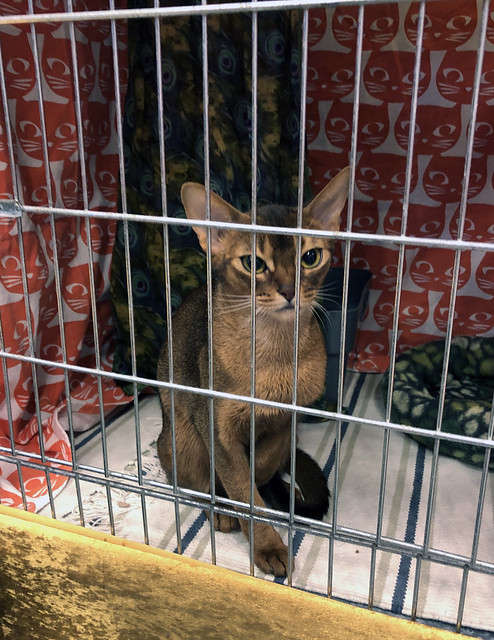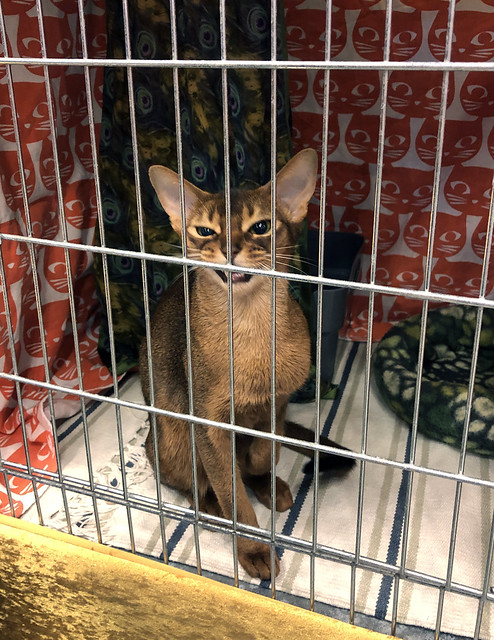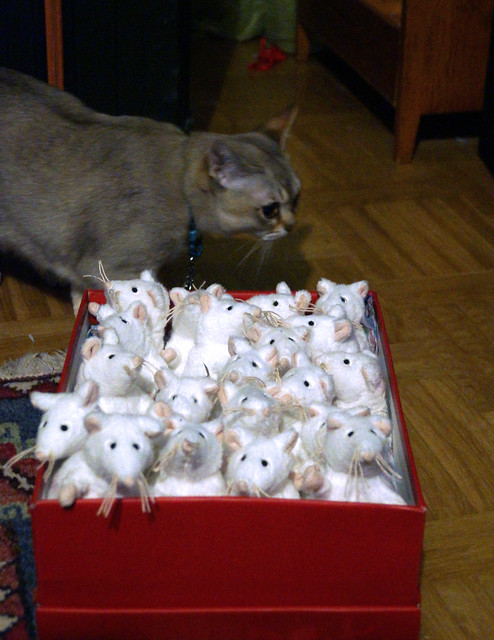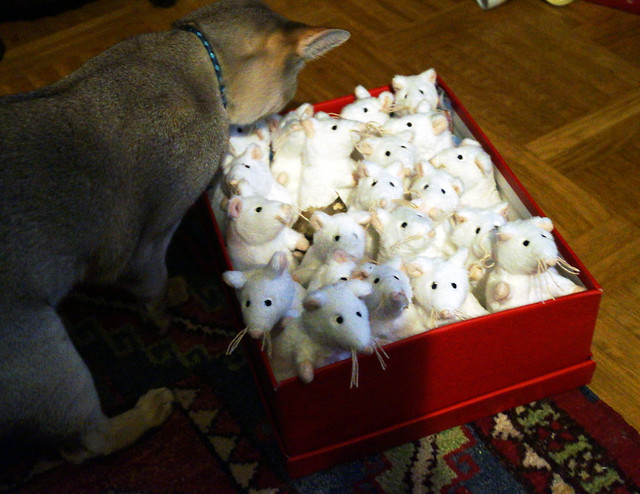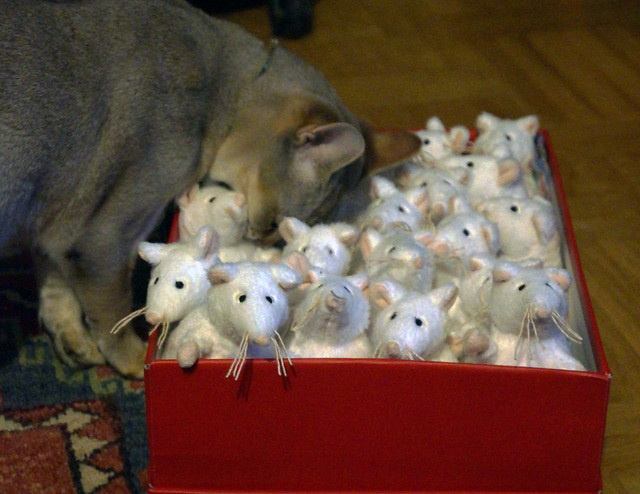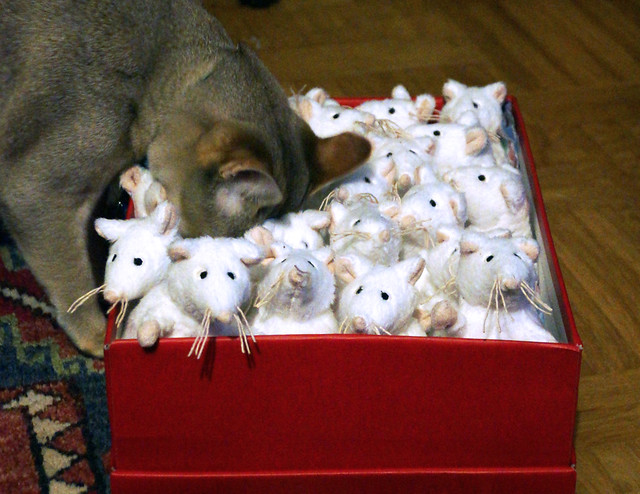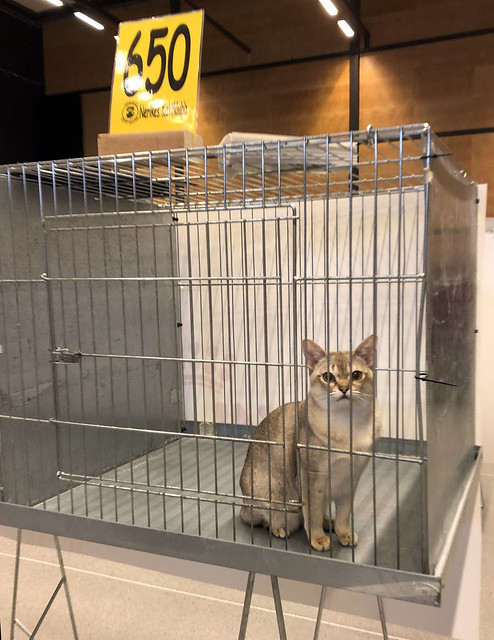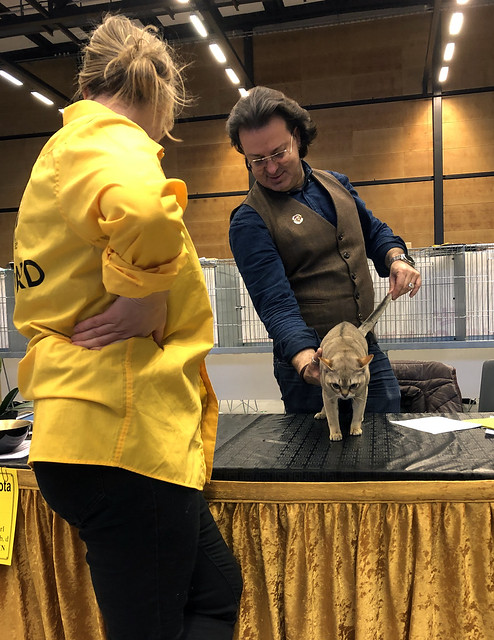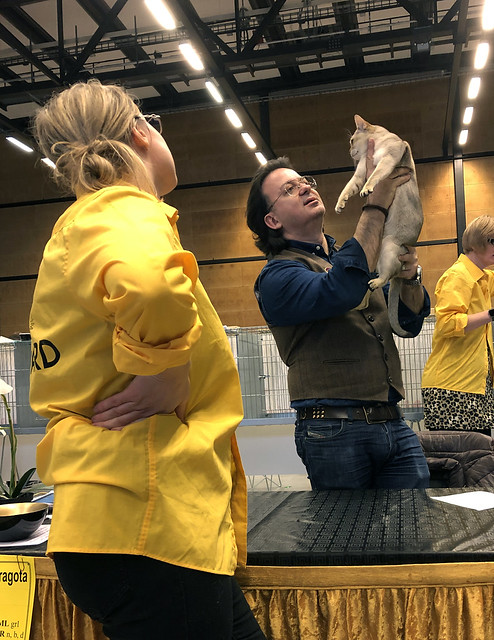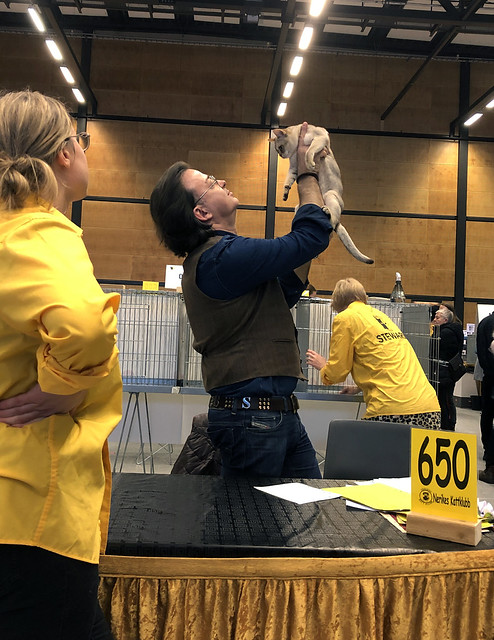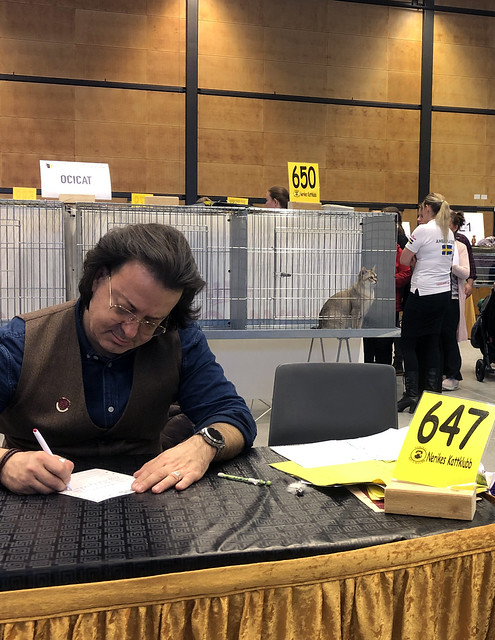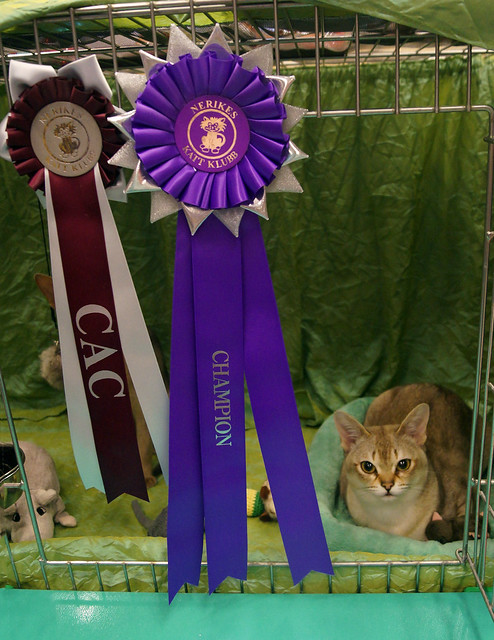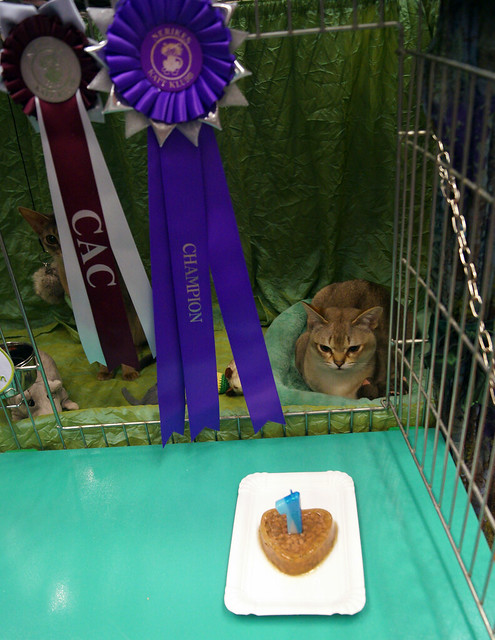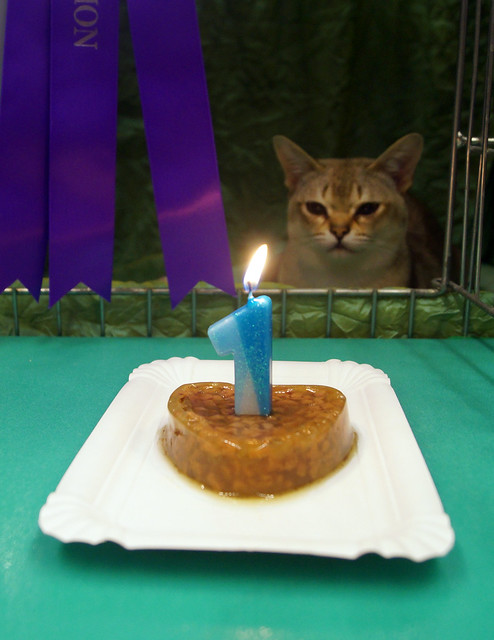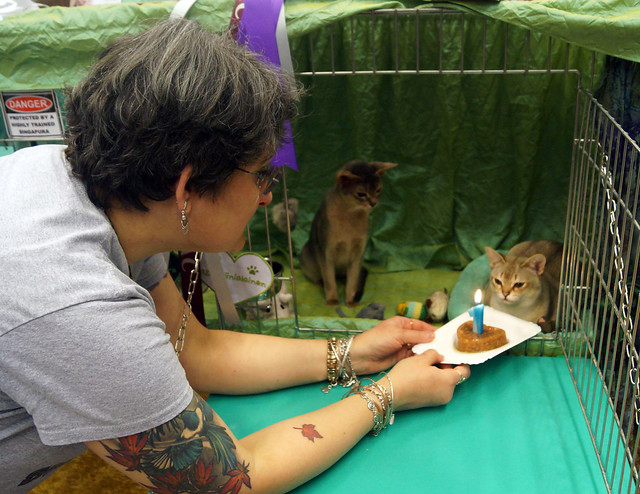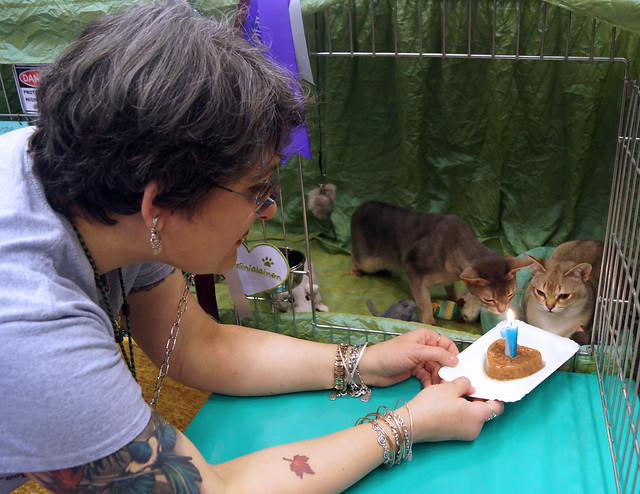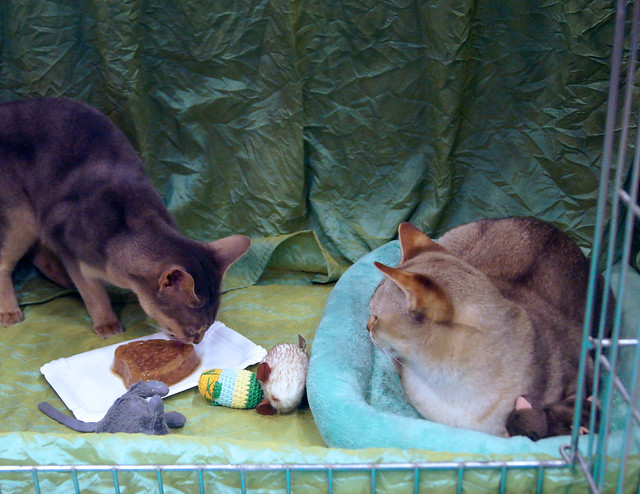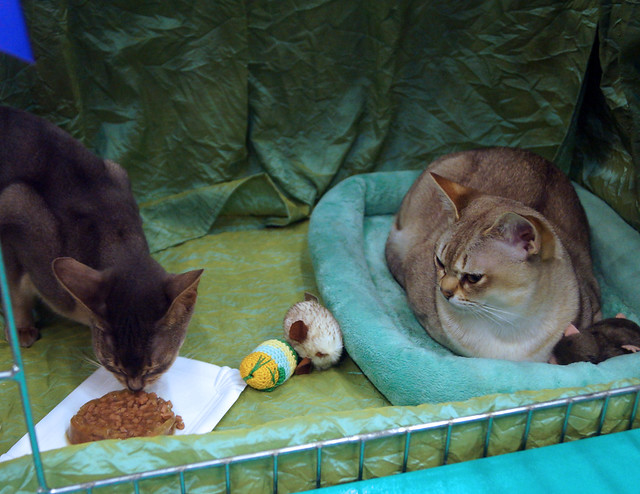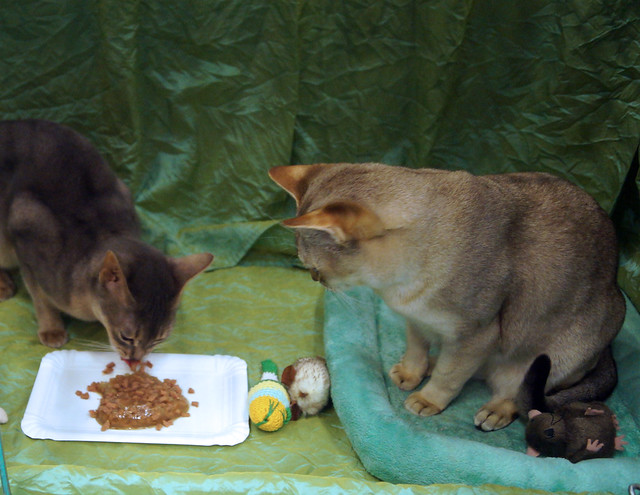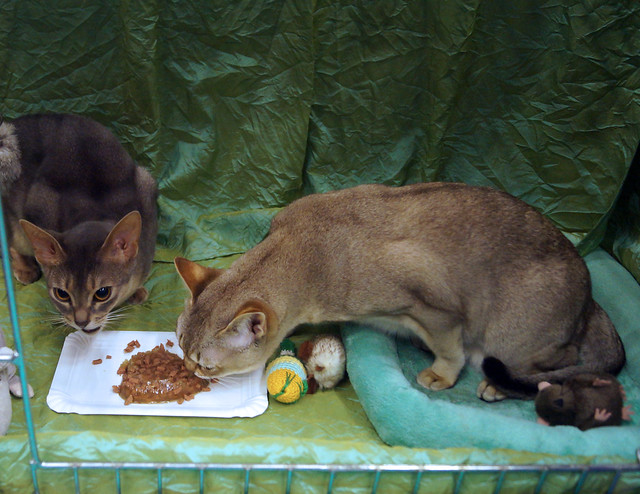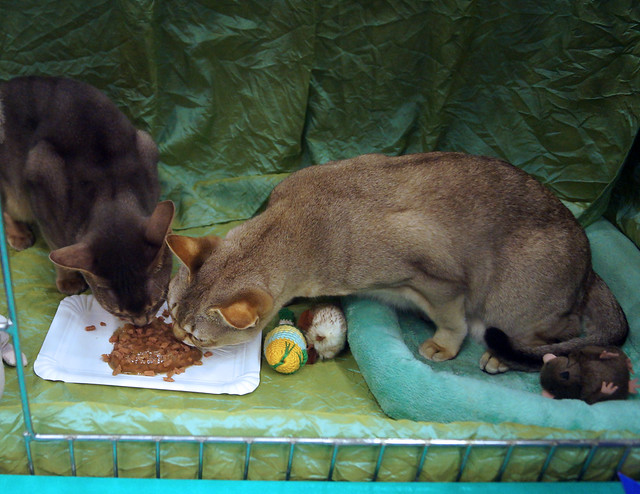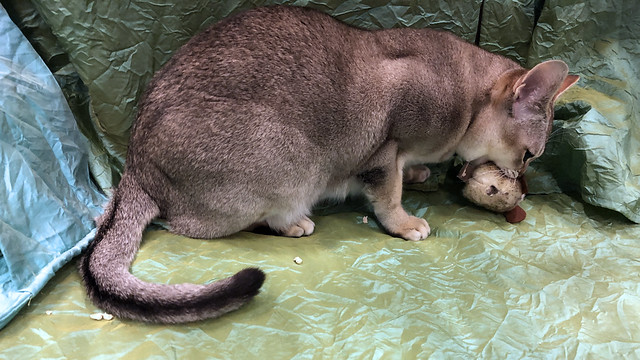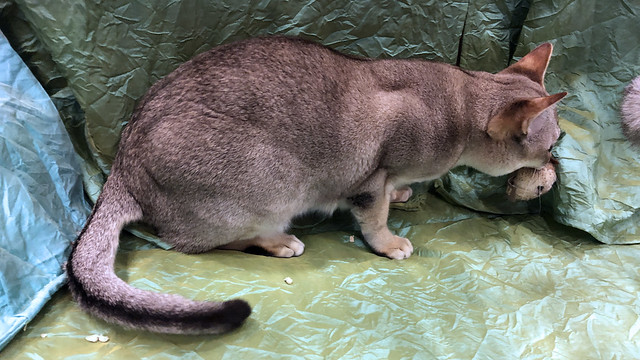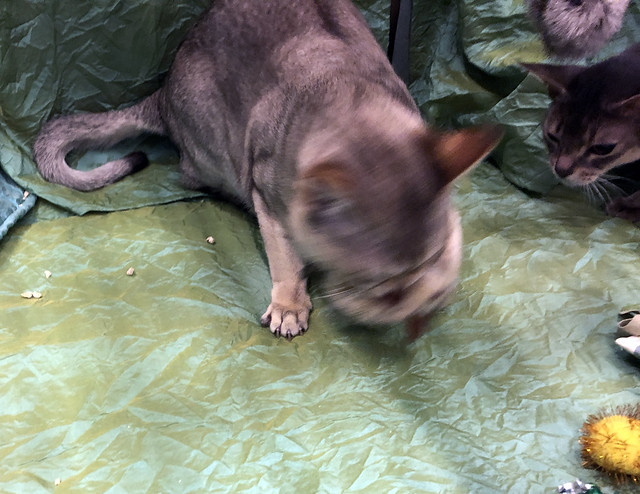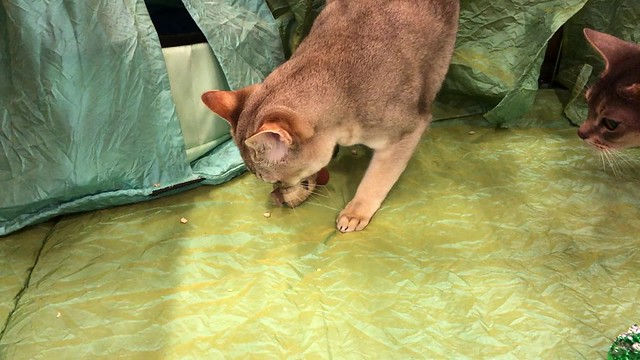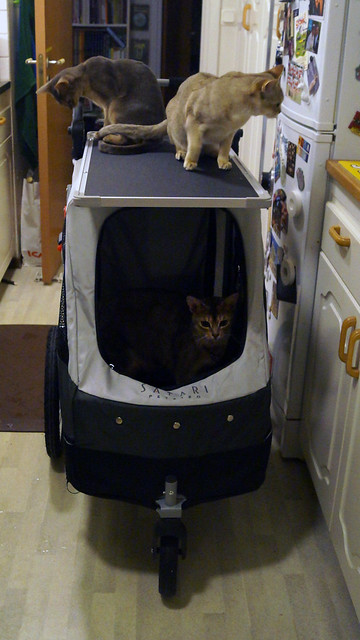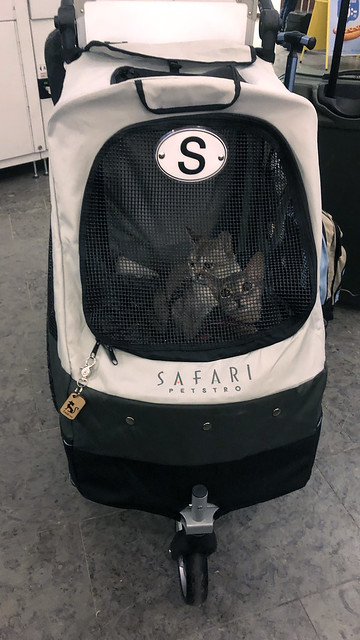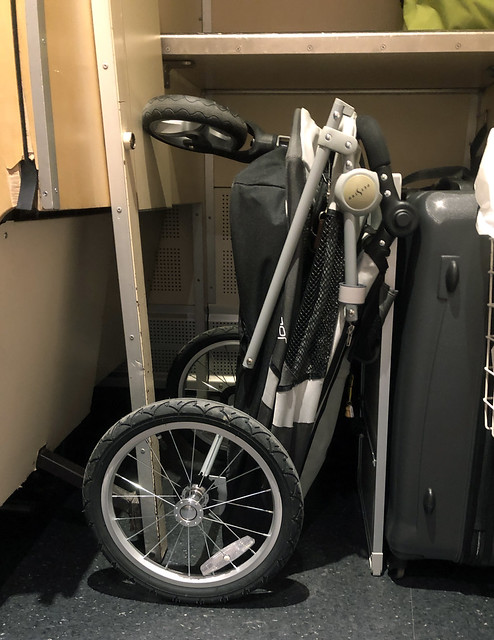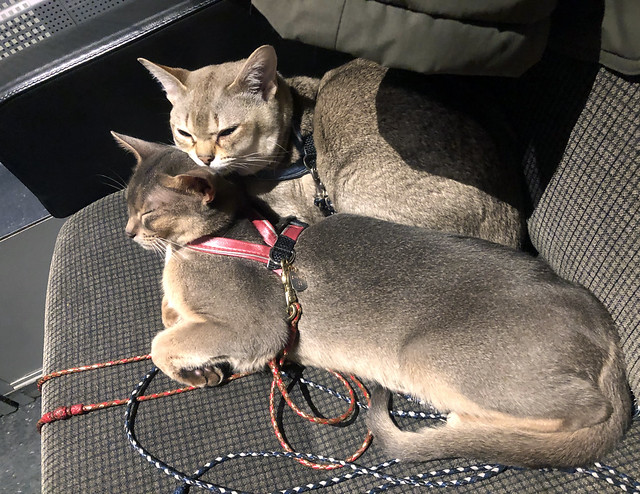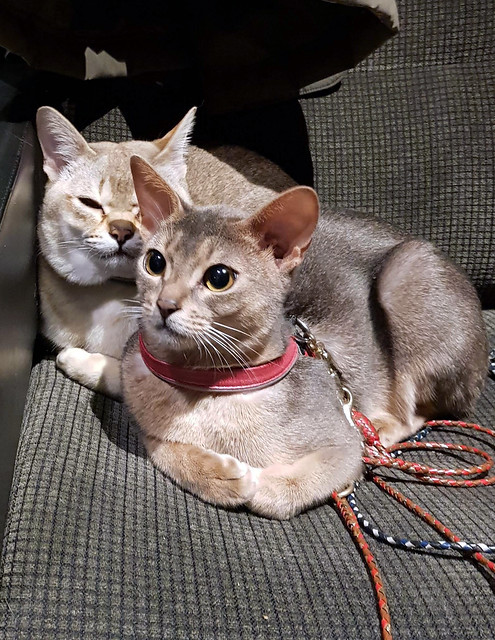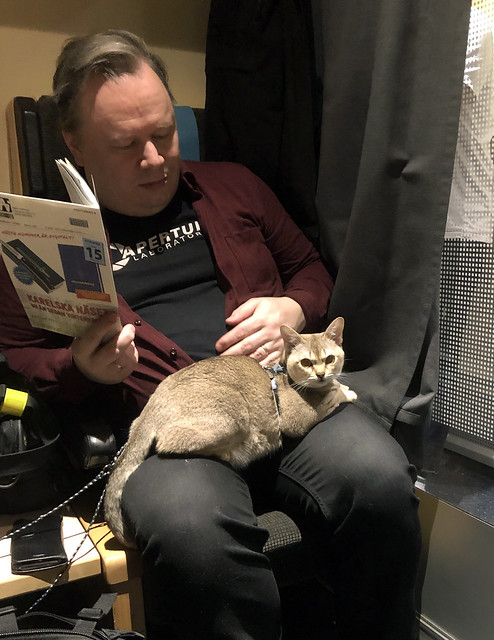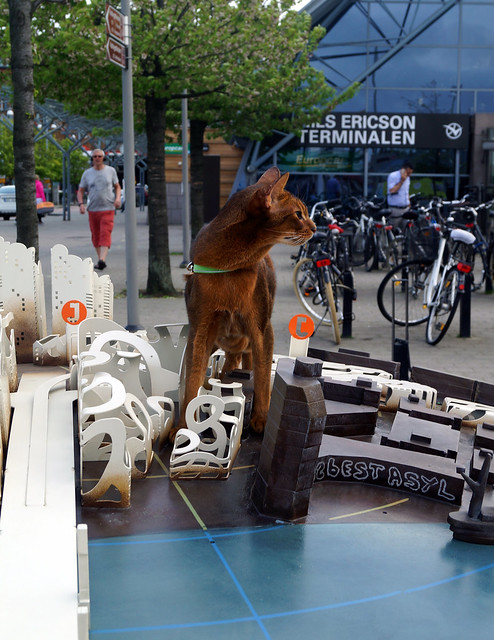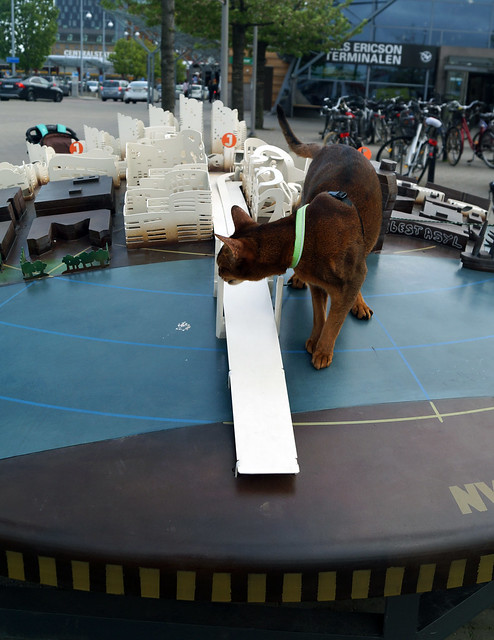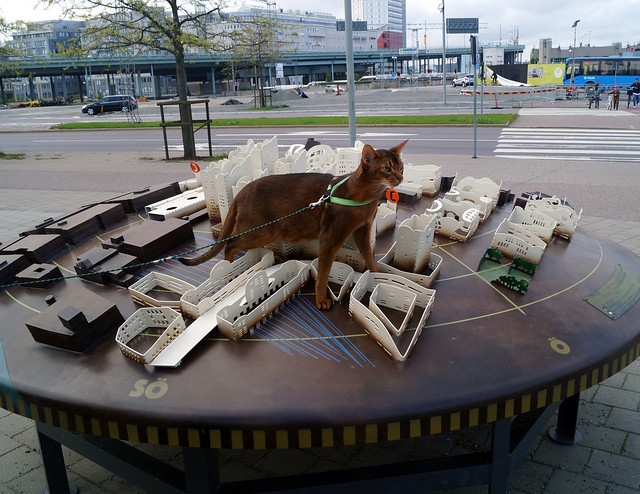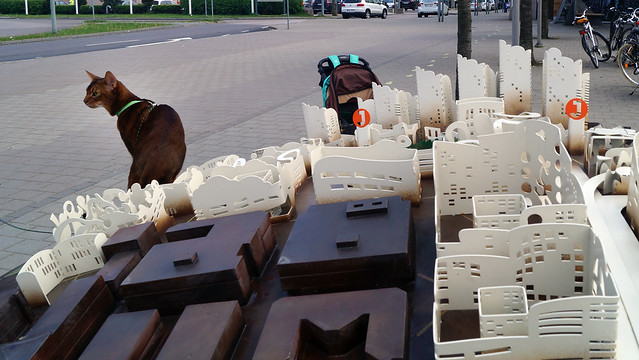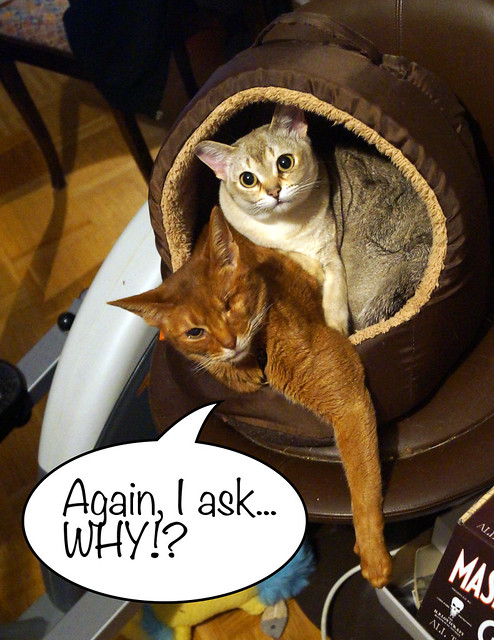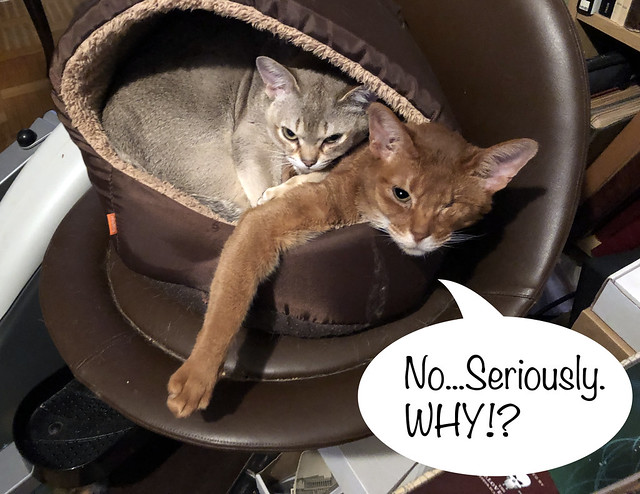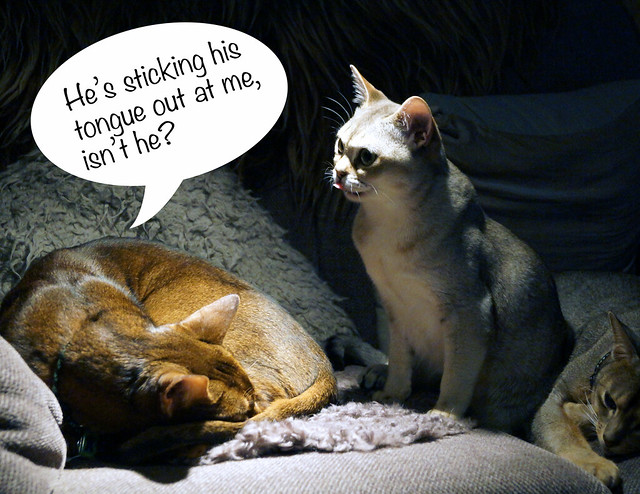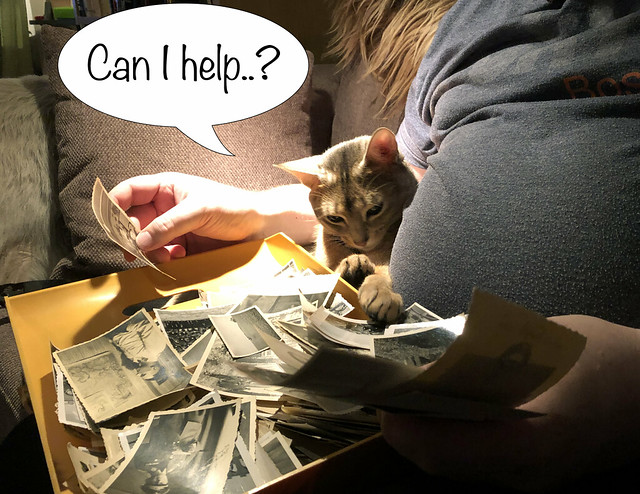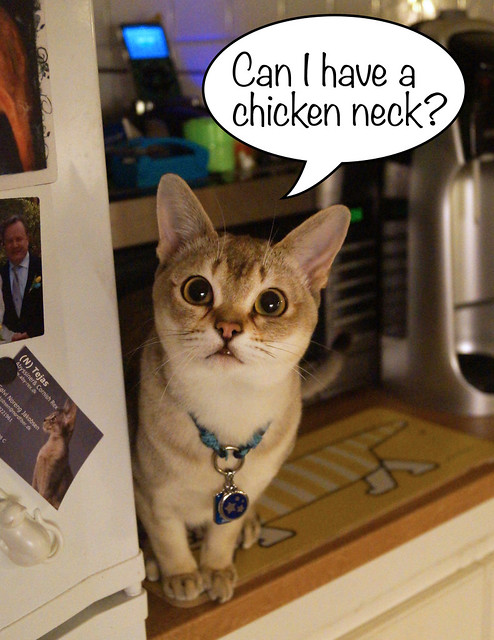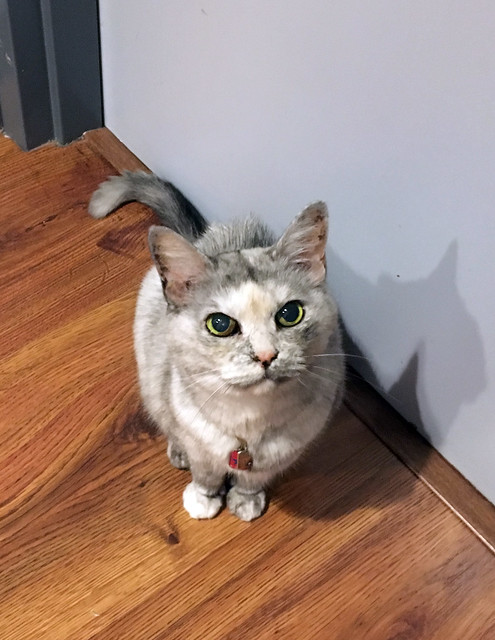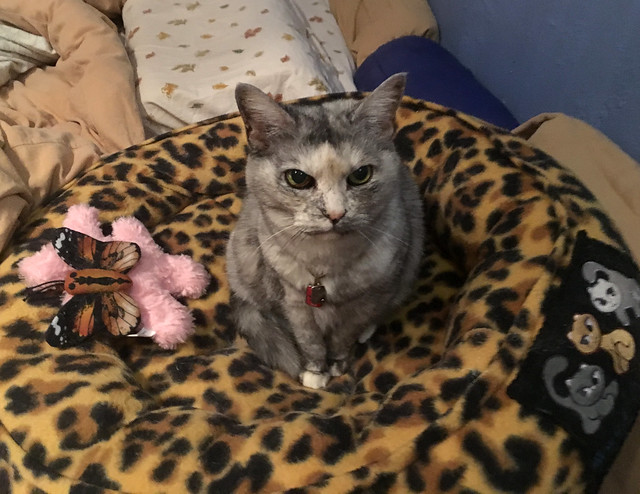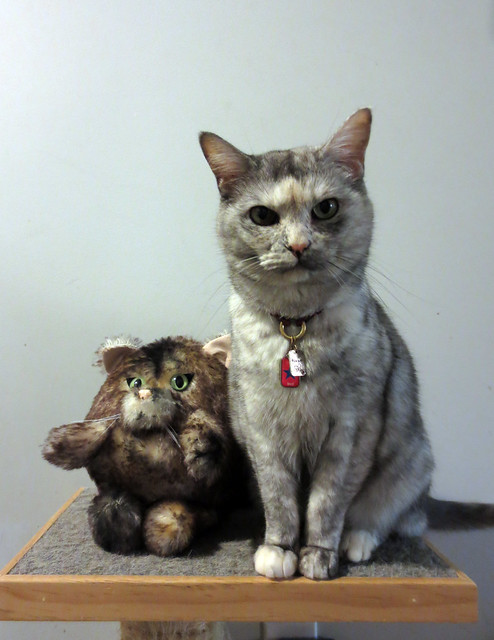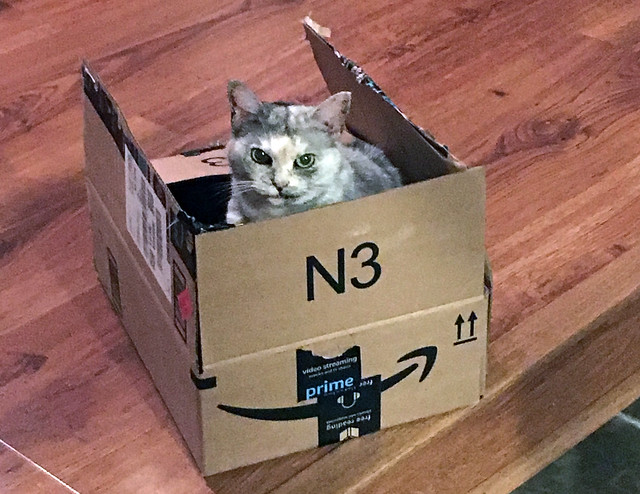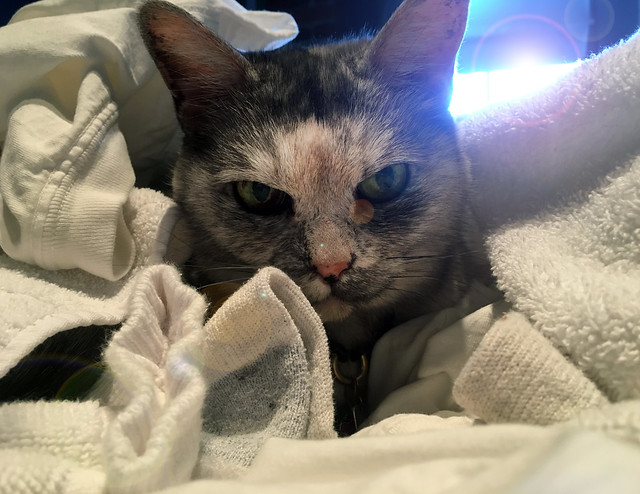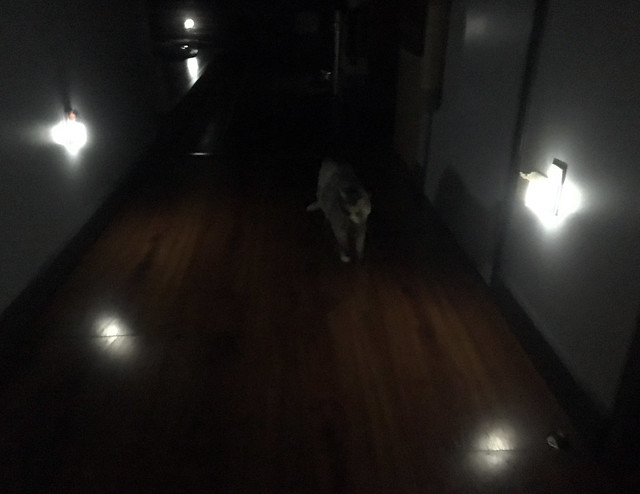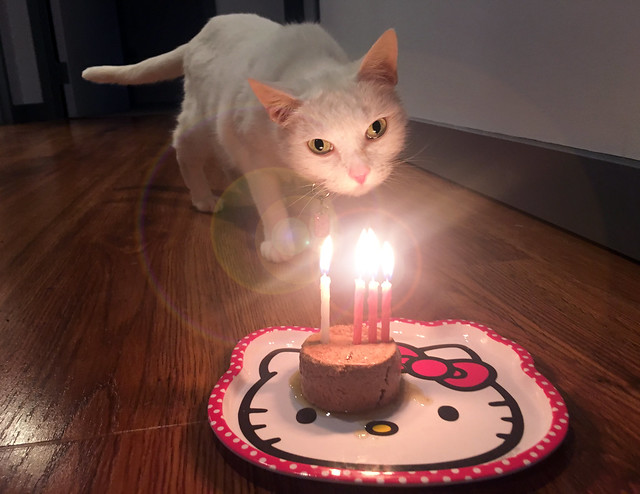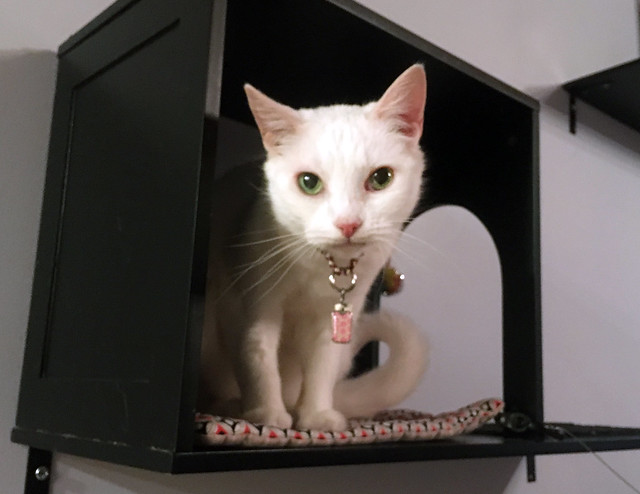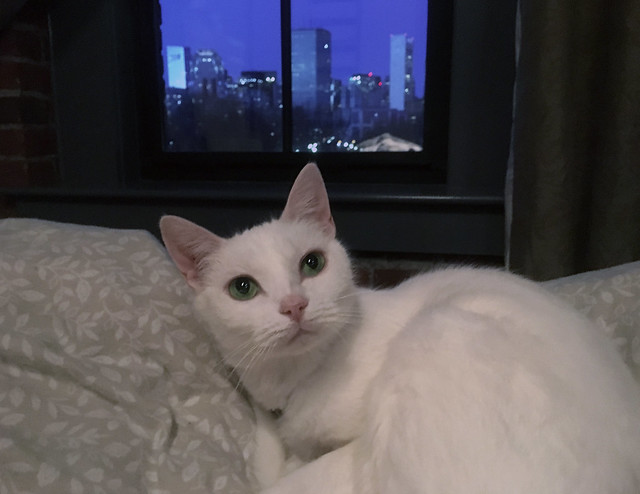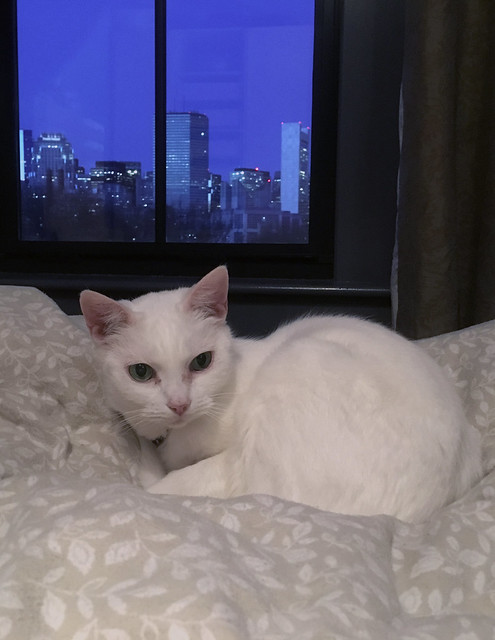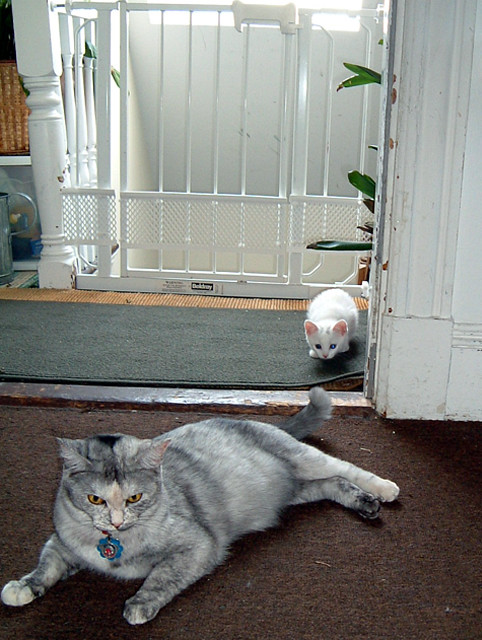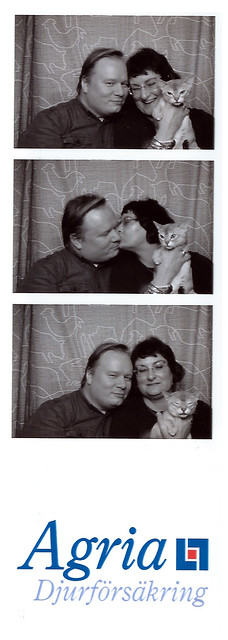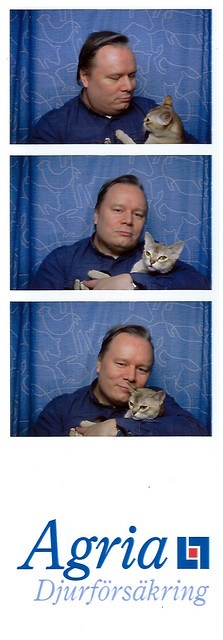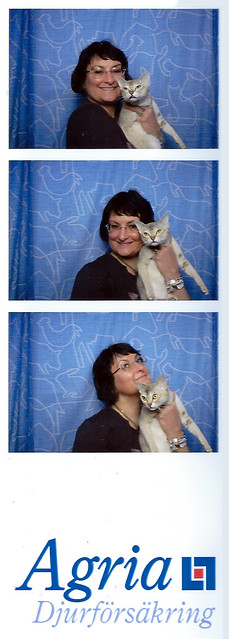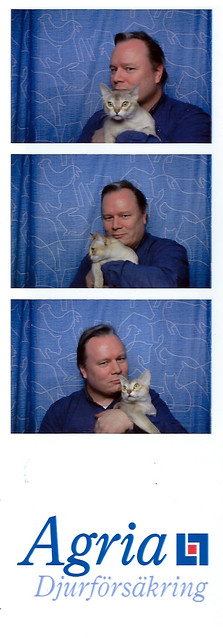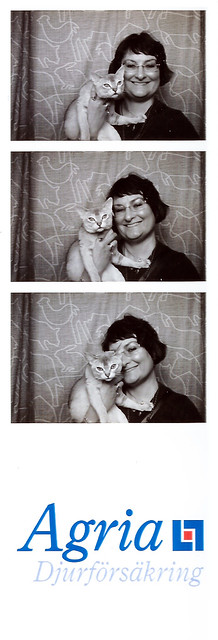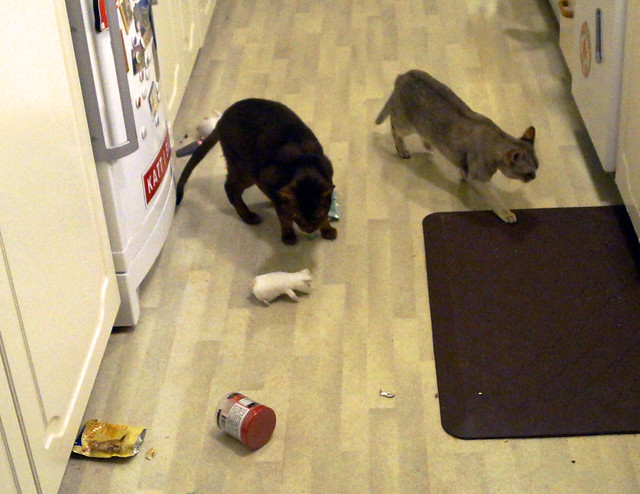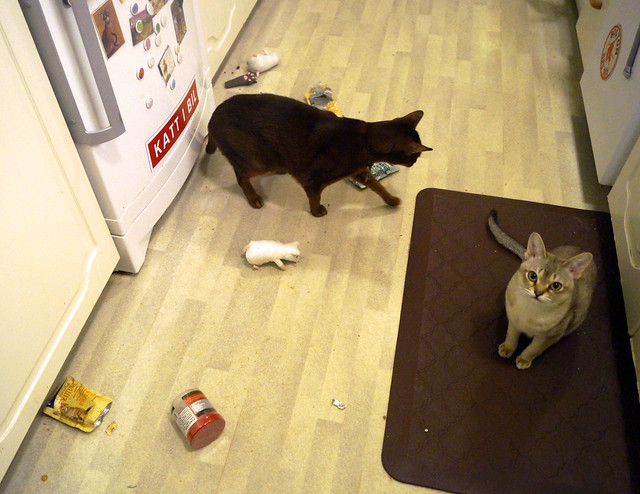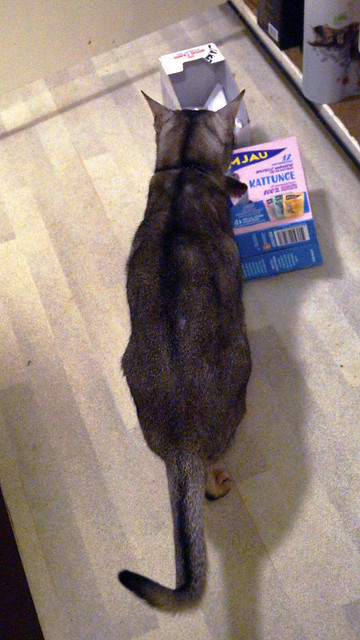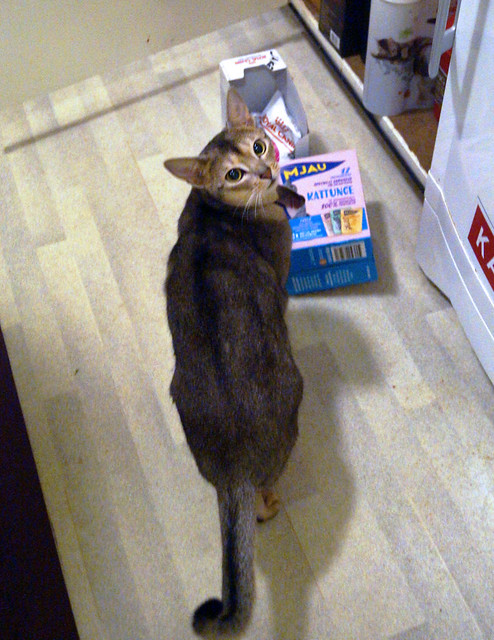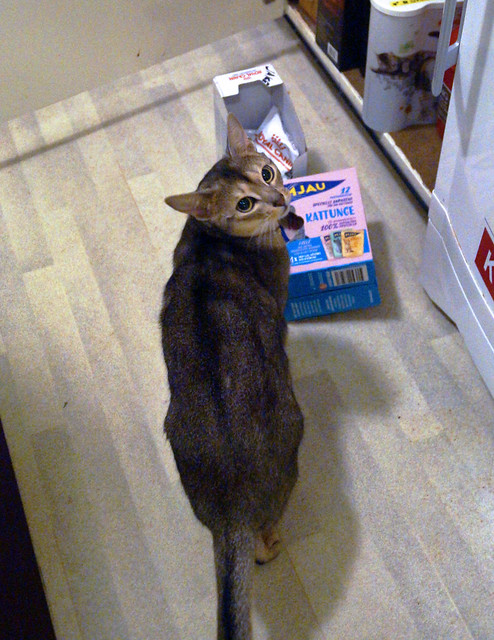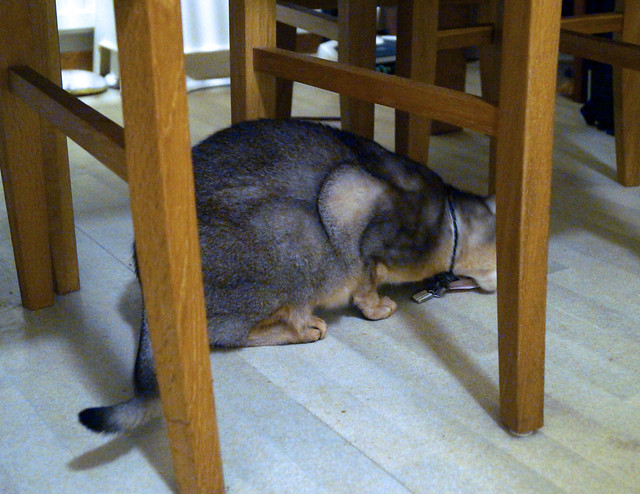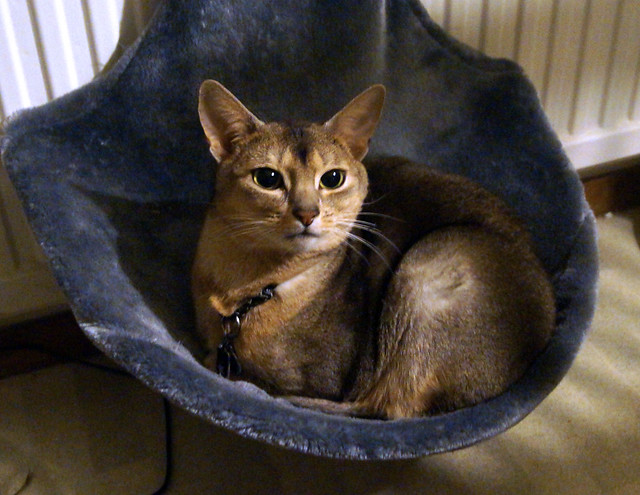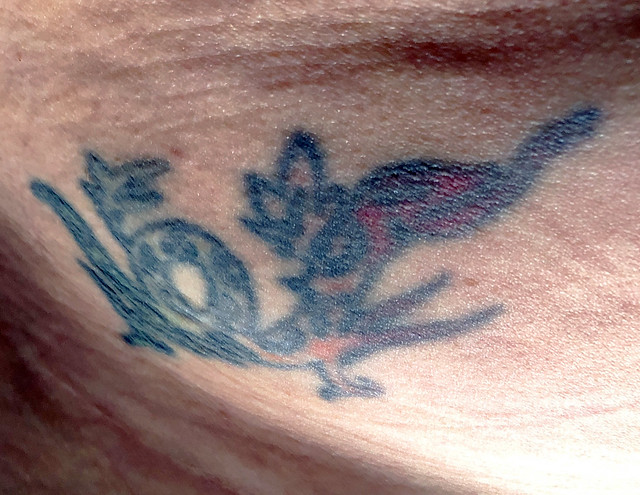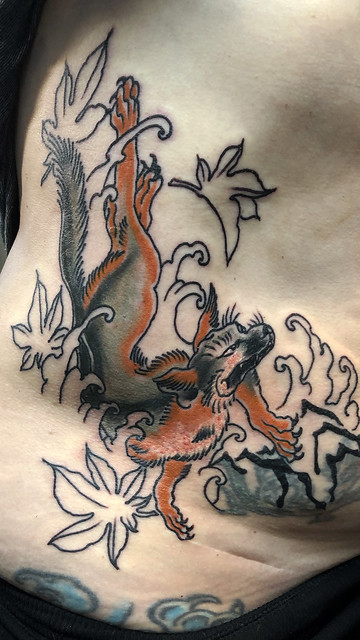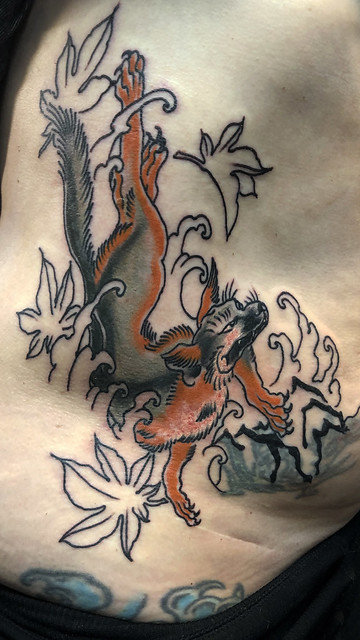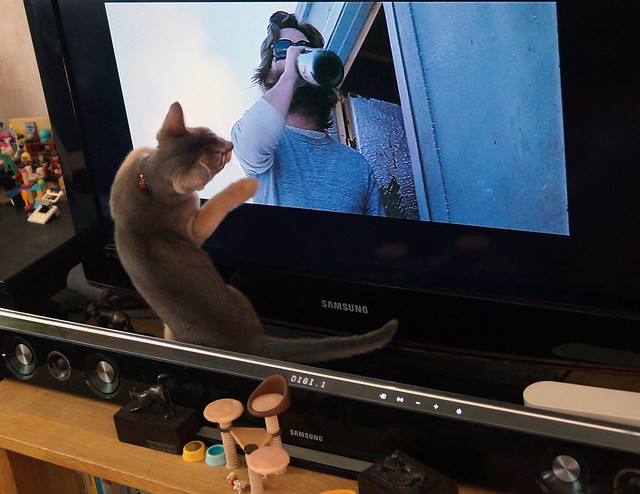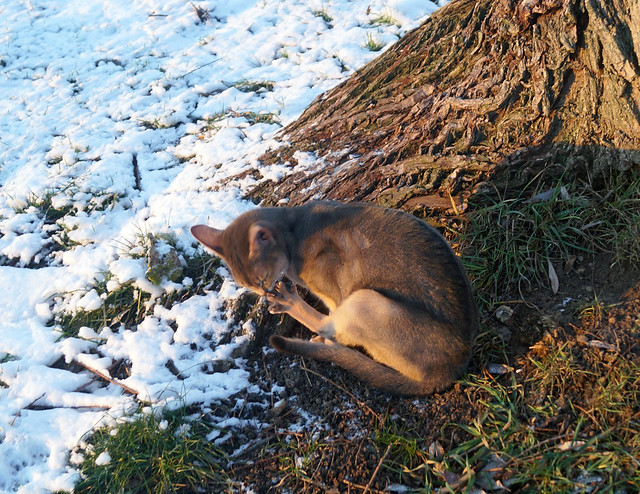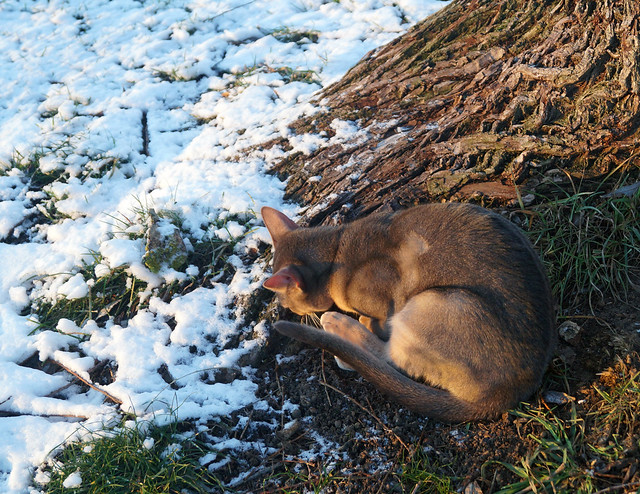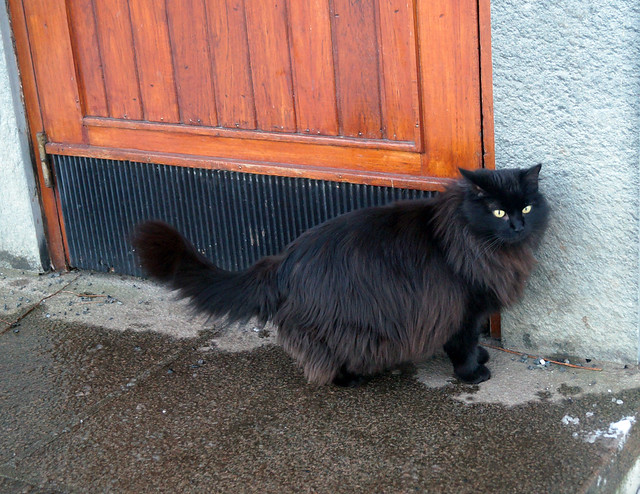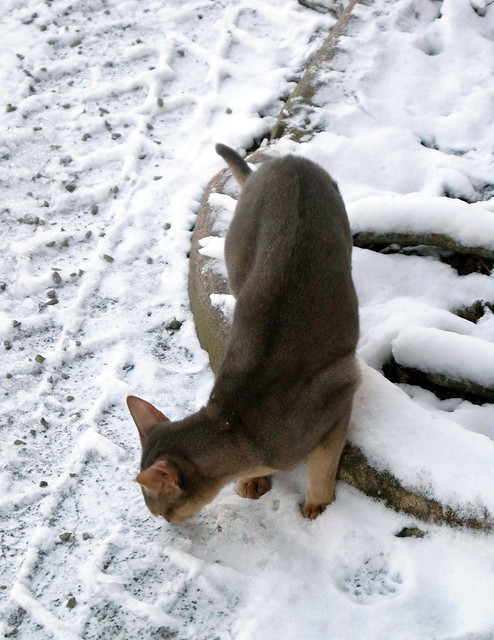You may recall that Jacoby has been having some sort of vague mysterious ailment. We spent much of the summer shuttling to the djursjukhuset in Jönköping to try to figure out what the problem was. But we have finally gotten to the bottom of it. It took a while because I needed three separate fecal samples from Jake…and I was having a devil of a time catching him in the act! But finally the first week of September I got that third sample, and a week later Dr. Cecilia emailed me with the result: “Today I’ve finally recieved Jacoby’s fecal sample results. We have significant findings that may well explain his weight loss and (quite possibly) also his change in behavior. He has the parasite Tritrichomonas foetus that in chronic cases may induce chronic intestinal inflammations. He also has toxin-producing Clostridia in overgrowth.”
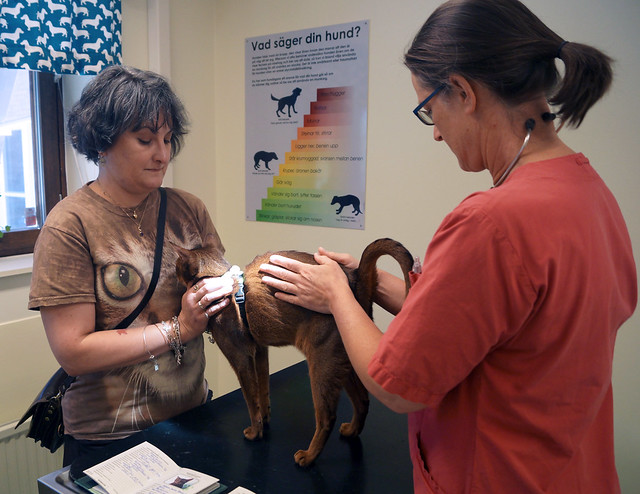
TriTrich is a protozoan parasite that can infest multi-cat households. But it’s good news, right? At least we know what the problem is. I mean, we have already dealt with Giardia, which is a huge problem to deal with, and we managed to survive that…so TriTrich is at least better than that, right?
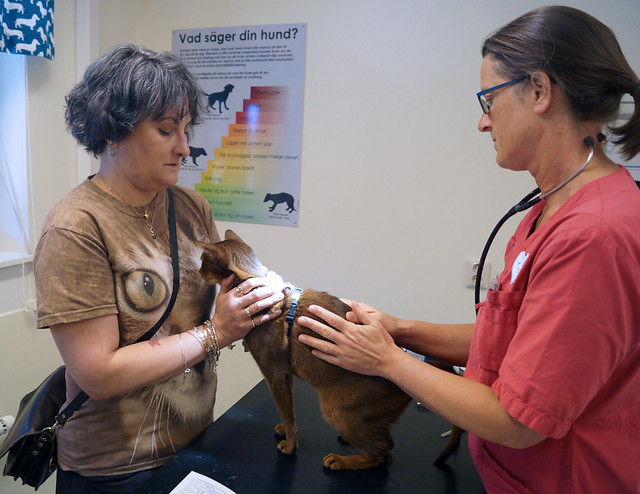
Well, yes and no. Whilst Giardia is harder to kill in the house because the protozoa are shed encased in cysts which are hard to destroy, the medication is readily available in any Apotek. The TriTrich protozoa have no such protective “shells,” but the problem with treating TriTrich is that the medication for it, Ronidazole, is toxic. Like, wear rubber gloves when giving the pills (for four days), and also wear a face mask when cleaning the litterbox during medication and three days after the last pill has been given. Dr. Cecelia had to get specific licenses from Läkemedelsverket (the Swedish bureau that deals with prescription medication) for each cat based on their weight. This was delayed a bit because, as usual with Swedish government agencies, the instructions on the paperwork weren’t entirely clear, and there was an error on the original paperwork so it needed to be redone…and Läkemedelsverket only sends the denial notifications by snail mail.
But we finally got ahold of this highly-regulated, super-toxic medication, which I had to give to five cats once a day for fourteen days…yeah, good times. The exact written instructions were as follows: “All cats are treated with 1 capsule per day for 14 days. They are prescribed and will be sent directly home to you. The drug is toxic and is excreted through feces and urine. Therefore, you need to use disposable gloves and masks when you’re cleaning the litter boxes. The most common side effects (still uncommon), are neurological. Contact us immediately if any of the cats show any neurological abnormalities or other symptoms.” Now, that’s not at all daunting, is it? At least I’m not the only person who’s been through this! And hey, this time I didn’t get bitten, either!
I also had to bathe all the cats. I wasn’t sure when during the medication timeline I should bathe them all, so I emailed some researchers at North Carolina State University for advice, and was pleasantly surprised at their quick and helpful response! They told me: “To my knowledge, no one has looked at the optimal time for performing a disinfection during treatment for T. foetus (ie. at what point during the treatment, on average, is T. foetus no longer being shed by the cat). The good news is, the T. foetus organism is not particularly robust once outside the host. We have observed the organisms in feces are no longer viable 24hrs after being voided into a litter pan, in the absence of litter; the presence of litter likely speeds the process up via desiccation of the feces.” So, towards the end of the dosage period, we cleaned one room, washed all the cats, locked the cats up in the clean room and then cleaned the rest of the house. We used liberal amounts of Virkon (which is actually better than bleach for sanitizing – and without the smell and turning things white).

Another importan part of eradicating TriTrich is to thoroughly clean all the litterboxes, since it is mainly transmitted in feces.
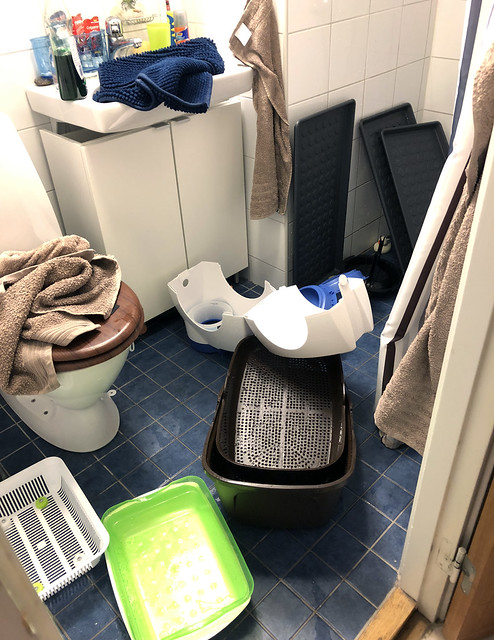
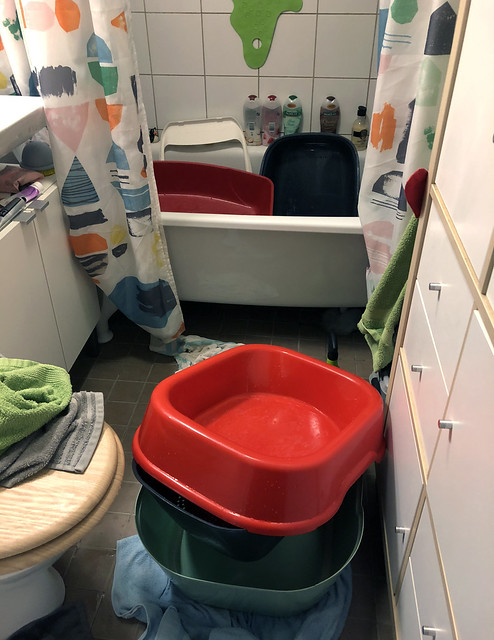
It wasn’t easy, cleaning six litterboxes, but between the two bathrooms, I managed to wash them all.
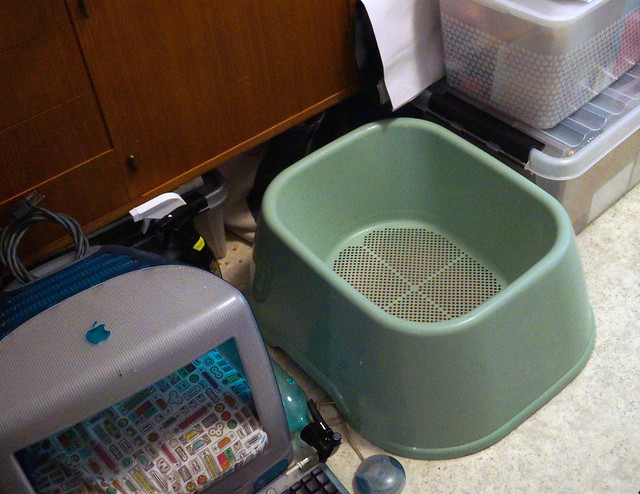
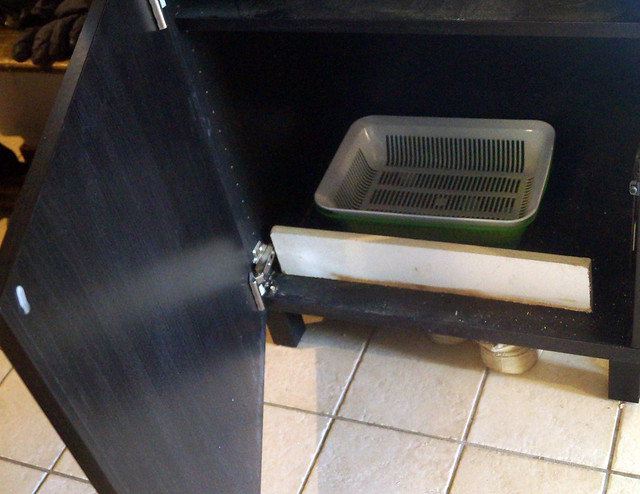
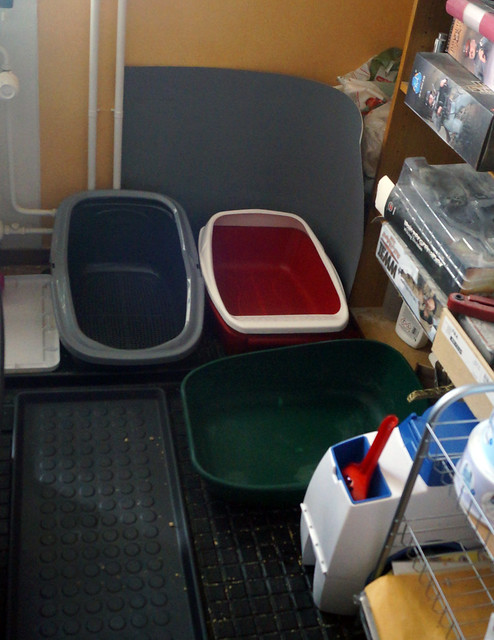
We got all the freshly cleaned boxes back in their places…
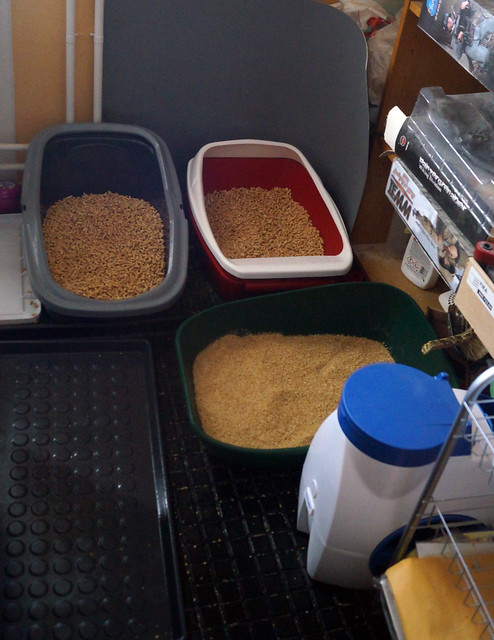
…and filled them up with clean, fresh litter. We use two types, PeeWee pine pellets, which are wonderful, and Cat’s Best Öko, which is a plant-based wood fibre clumping litter. Both of these make collecting fecal samples very easy – much easier than clay litter.
This is important, because once we were done with the medication and the bathing and the cleaning, we needed to test all five cats’ poops. Which involved catching each cat “in the act,” so to speak. Izaak and Lorelai were easy – just catch them when we’re at a cat show. Jacoby, as well, was simple: he eats in a room with a box in it, so just catch him after he’s been fed. But Alfred and Angel…it took me weeks to catch them, especially Angel! I finally managed it, though…

So now, we are TriTrich free…no diarrhea at all, and Jake seems happier and less growly, although he still hisses and growls at the younger cats…but I think now it’s just become a habit to be a grumpy old man towards them more than an actual medical symptom.
(And yeah, I wasn’t going to post a photo of anyone actually using a box, so have a shot of Jake having his perfect teeth checked instead.)


